The battle of the mythos titles is officially heating up, with open world Frogwares title The Sinking City following last year’s official Call Of Cthulhu and arriving ahead of next year’s 2D RPG Stygian: Reign Of The Old Ones.
While all three offer their own pros and cons, for this style Frogwares was absolutely the right developer for a Lovecraftian game, having already cranked out a sizable catalog of investigative-focused detective titles, and that’s where a Cthulhu entry needs to be rooted.
Long story short? There’s officially been a new bar set for future developers who want to tackle Lovecraftian content.
While not a perfect game — there are some undeniable rough edges — The Sinking City is still easily the definitive cosmic horror game of our time, and it solidly edges out of the competition so far.
A New Take On Old Themes
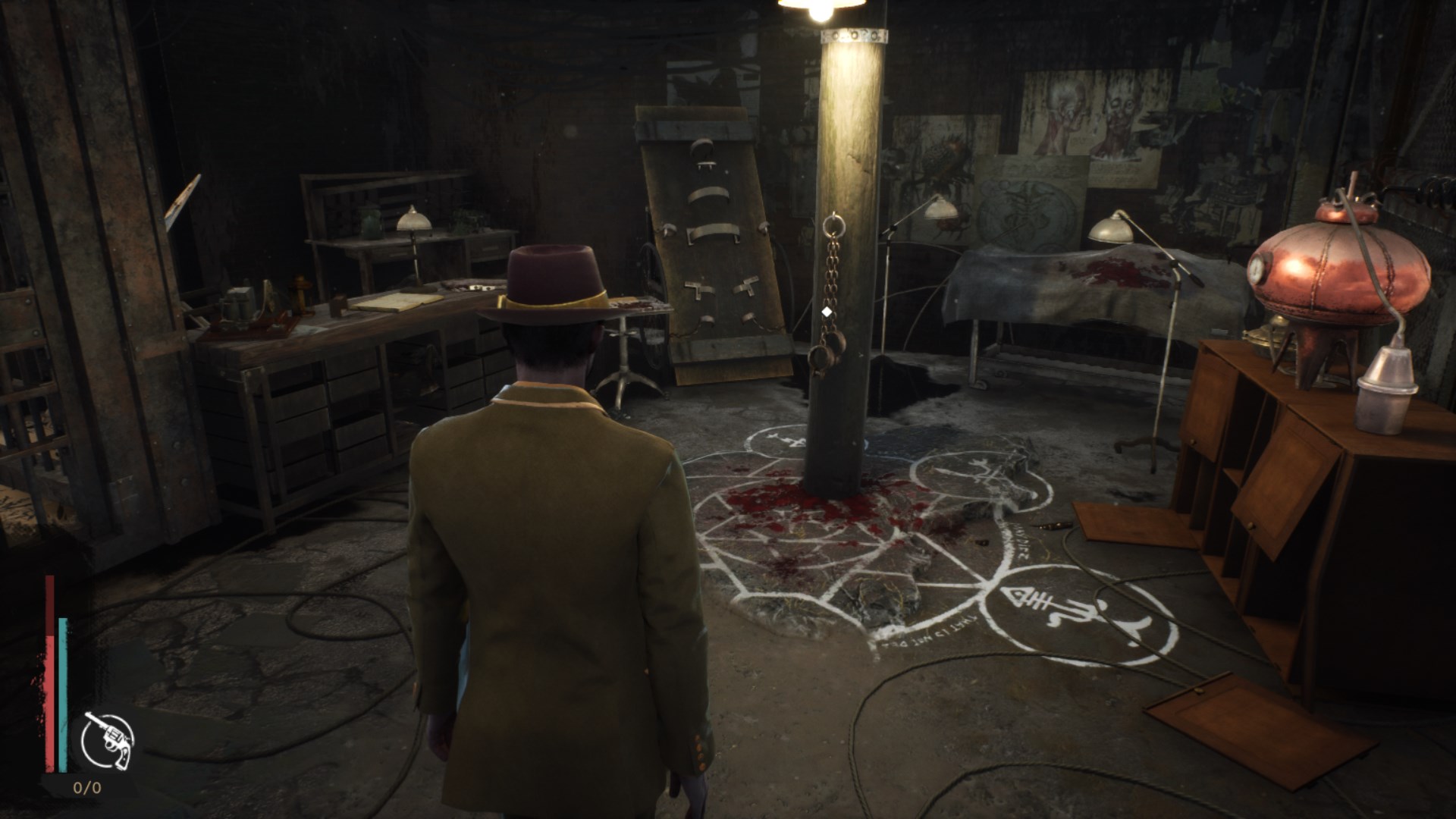 Somebody was having one hell of a party in here…
Somebody was having one hell of a party in here…
So what’s in store for those who have already delved deep into the mythos?
One of the big appeals here is that the various mythologies of Dagon, Shub-Niggurath, Cthulhu, and Hastur are all combined into a cohesive whole that’s tantalizing familiar but has plenty of twists.
Those familiar with the creatures and cults of course will have an edge over newcomers coming into the game — you’ll know immediately for instance that the charity group with a fish eye symbol named EOD most definitely does NOT stand for Everyone’s Obvious Duty as they claim.
The collision of different great old ones and mind-bending truths into one location results in an experience that’s essentially like playing a bunch of one shot tabletop sessions all rolled into a single campaign, and it works phenomenally well in the open world format.
While exploring the city of Oakmont players will of course recognize a number of similarities to the 2018 Call Of Cthulhu on the surface.
You play a private detective in both games, and uncover secrets in a seaside town where rotting whale carcasses are frequent decorating themes. Different gangster and law enforcement factions are vying for control like in CoC, and the two games feature similar options in what you can choose for your final decision at the end… but The Sinking City strongly distinguishes itself beyond those superficial surface comparisons with drastically different gameplay.
Cosmic Horror Isn’t Meant To Be Easy Or Accessible
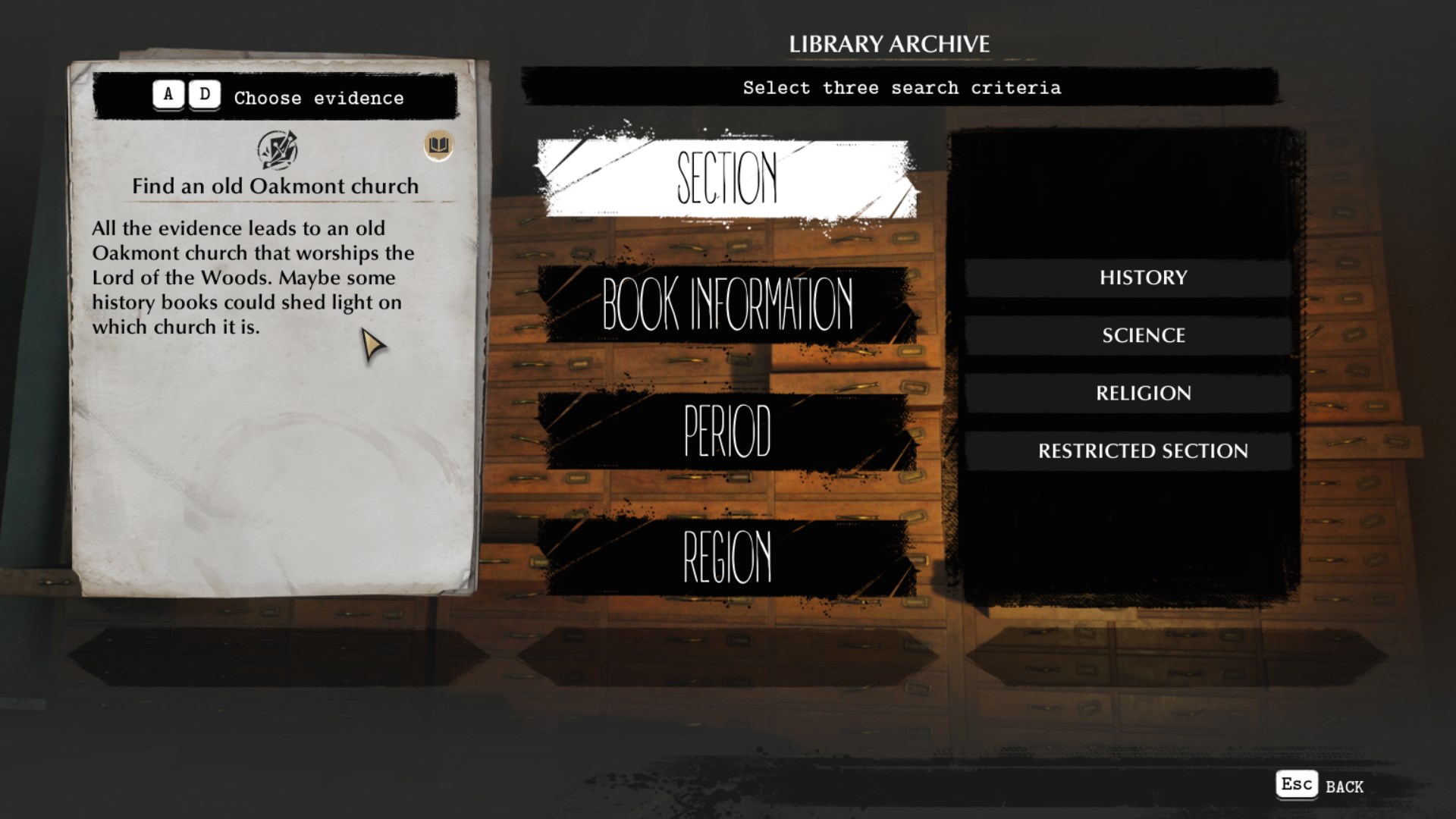 Hitting the library, newspaper, or city hall archives are crucial to success
Hitting the library, newspaper, or city hall archives are crucial to success
To put it simply, The Sinking City doesn’t hold your hand — there are no big blinking markers on the map telling you where to go. There are no house numbers or waypoints to follow, and the city is massive. Like any newcomer to an unfamiliar place, you’ll have to pull up your map and find locations based on street signs and landmarks.
This shift is a fantastic change in the style and a reversal of the typical overly-easy quest following formula in open world games, although it does come with a slight downside if you aren’t willing to put in a bit more effort.
You have to pay attention to the clues you gather and very carefully read your notes to resolve cases and move the story forward, and in one case early on my dumb ass stalled out for hours because I misread a line of text.
I thought had the key to Throgmorton Manor, when I actually had the key to the Expedition Headquarters, so I spent hours wandering around the city trying to figure out where the hell I was supposed to go to utilize that key as a piece of evidence (since I could already get into the Manor on my own).
My first few hours with the game were increasingly frustrating as entered building after building and saw all these things that seemed like they should be clues to examine, but which I couldn’t actually use in any way.
After re-reading all the clues for the umpteenth time I figured out I needed to go open the Expedition Headquarters, at which point the next segment of the game unlocked. Here’s the funny thing though… I actually recommend doing something like this on your first playthrough, because it led to a better overall experience by becoming familiar with the city’s layout while unlocking all the fast travel locations.
Those little exploration details and the lack of hand holding also lead to some amazing discoveries. At one point while searching for a specific house I stumbled upon a family all shot to death during a murder / suicide.
The kicker? That wasn’t even the right location for my quest — this particular building just happened to have witnessed something awful with an entire side story across the street from where I was actually supposed to go.
Open Mind, Open World
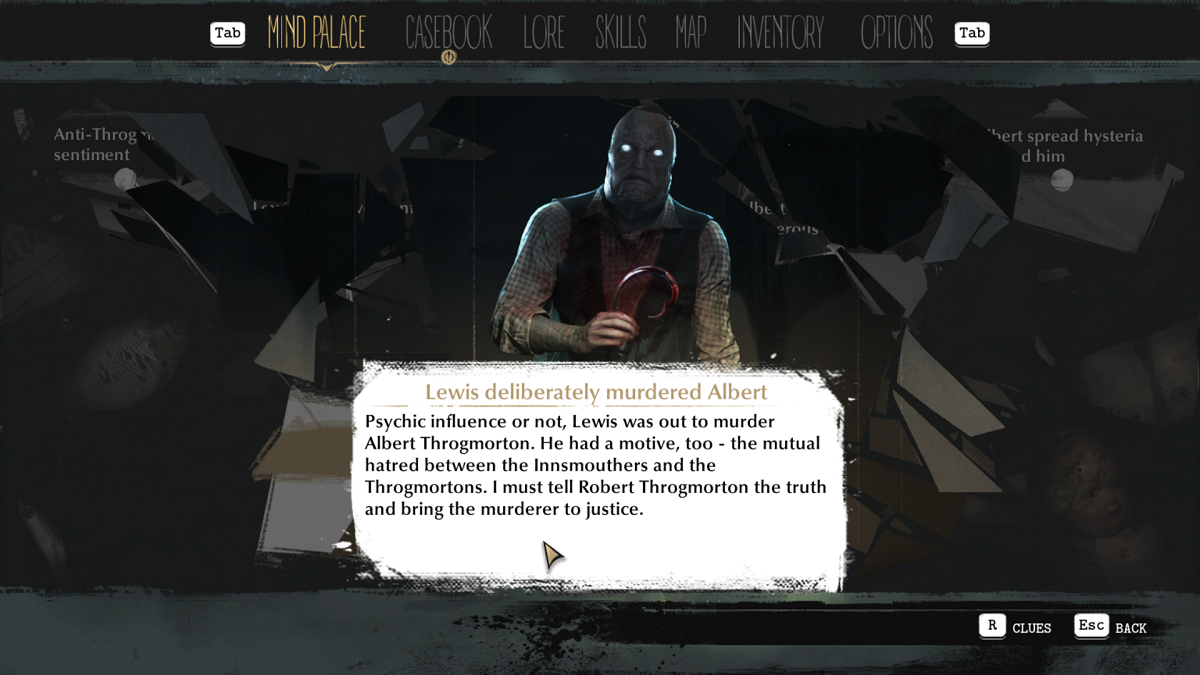 Tackle quests your way, and come to your own conclusions about ending them
Tackle quests your way, and come to your own conclusions about ending them
The Sinking City is heavily focused on exploration, whether that’s finding all the nooks and crannies of the above ground streets of Oakmont, traversing flooded sections of city by boat, and even visiting underwater locations with a diving suit.
No matter where you go, the investigation mechanics on display are significantly more in-depth than what we got with Call Of Cthulhu last year, which tried to directly translate the tabletop rules to the PC realm.
While solving cases in The Sinking City you’ll end up taking photos, handling objects, researching newspaper articles or arrest records or birth certificates, dispelling illusions to find hidden rooms, reliving events through a supernatural ability, and more. There’s more player agency here as well, as you can come to different conclusions and decide how to handle the information you discover.
Another way in which this mythos entry shines with its open world format is by balancing your time hitting the books to find clues — a staple of the tabletop cosmic horror RPG experience — and adding in gameplay elements that keep things more interesting.
Yes, that means combat, and yes, I recognize that fighting unspeakable monstrosities with a gun is traditionally thought of as anathema to cosmic horror. Wizards Of The Coast took relentless criticism for going that route when they made a d20 version of Call Of Cthulhu back in 2001, for instance.
Frogwares splits the difference here though, with scarce ammo and enemies dealing large amounts of damage quickly. There are also instances of bigger mythos creatures that just simply can’t be killed.
This isn’t Supernatural or Buffy or anything — its still bleak cosmic horror — but there’s an undeniable appeal in getting to blow up a centuries old witch or a giant loping monstrosity with a hand grenade that makes Sinking City legitimately fun to play.
Your detective starts out with a puny revolver, eventually upgrading to a shotgun, then a single bullet combat rifle, and at the very end even an SMG, although that thing chews through ammo so fast you’ll never use it on a regular basis.
That’s the big way the game remains grounded and doesn’t go into full on mythos commando warrior mode — you can ONLY recover health or get ammo by scrounging or crafting. There’s no store to buy first aid kits or sleeping spot to fill up your health bar.
The open streets filled with nothing but run of the mill insane citizens all contain minimal supplies and threadbare scavenging options. If you want the real goods, you’ve got to head into the infected quarantined streets, where everything very desperately wants to dismember or eat you. Simple supply runs are deadly, and you may end up using more resources than you gained, which makes survival a satisfying struggle.
Prejudice In The 20s
Wondering what exactly is going on in the story and themes between all those deadly scavenger hunts and crime scene investigations?
While the trailers made it look like this would be another retelling of The Shadow Over Innsmouth using slightly different names, the game actually takes place after that story has already occurred. The events of The Sinking City follow the infamous federal raid on Innsmouth, with the surviving refugees immigrating to Oakmont — and the locals are not happy about the new arrivals.
Oakmont evokes the tone and feel of the original 1920s mythos stories by focusing heavily on racism, xenophobia, disgust at co-mingling of the races, and fear of the dreaded other. In this case, it happens to be simians versus fish people and a variety of opposed cults, but the parallels to white versus black and straight versus gay are clear throughout the game.
Of course, the developers are keenly aware of how that sort of behavior will go over with a modern audience, so there are plenty of opportunities to fight back against the racist scum.
If you were a big fan of discovering you didn’t lose honor in Red Dead Redemption 2 when opening fire on white-robed shitheads at their burning cross gatherings, then there’s a similar cathartic element here in quests involving the KKK.
 Dunno what you’re talking about officer, he was like that when I found him.
Dunno what you’re talking about officer, he was like that when I found him.
Certain other modern elements make their way into the game, which may or may not go over well with American audiences depending on their political proclivities.
While it isn’t a gigantic plot point that dominates the game, it should go without saying that a certain someone has managed to insert himself even into this corner of the horror world.
Yes, you will come across a politician who styles himself a king above the law, has promised to build a wall to keep filthy foreigners out of the city and wants to “make Oakmont great again.”
If you couldn’t guess — and does this even need to be a spoiler alert? — said politician is not a good person, and he has significantly less money than he claims.
Those modern nods are pretty few and far between, however, with most of the story firmly focused on the inner workings of a city cut off from the rest of the world that’s dealing with the appearance of monstrous beasts and insane cults.
Rough Bumps Along The Road To Perfection
 What in Kay’s name is going on with the clothes here?
What in Kay’s name is going on with the clothes here?
From the difficult-but-rewarding investigative mechanics to the thrilling open world exploration and unique Oakmont lingo to draw you into the setting, The Sinking City does a lot right.
Unfortunately, I do have to mention there are ways you can tell its not quite a giant budget AAA game, even though it makes a herculean effort to hide that fact.
In particular, the way clothing moves can sometimes be a problem. Although not as horrifying as Assassin’s Creed Unity at launch, I’ve seen some really odd behavior with shirts and dresses flapping in the wind like long cloaks, or getting stuck in bizarre configurations.
Here’s where Frogware can potentially get away with it, though — the main character is going insane, and totally nutso stuff is already happening all the time, so in most cases, you can shrug off odd NPC behavior and glitching models as part of the atmosphere.
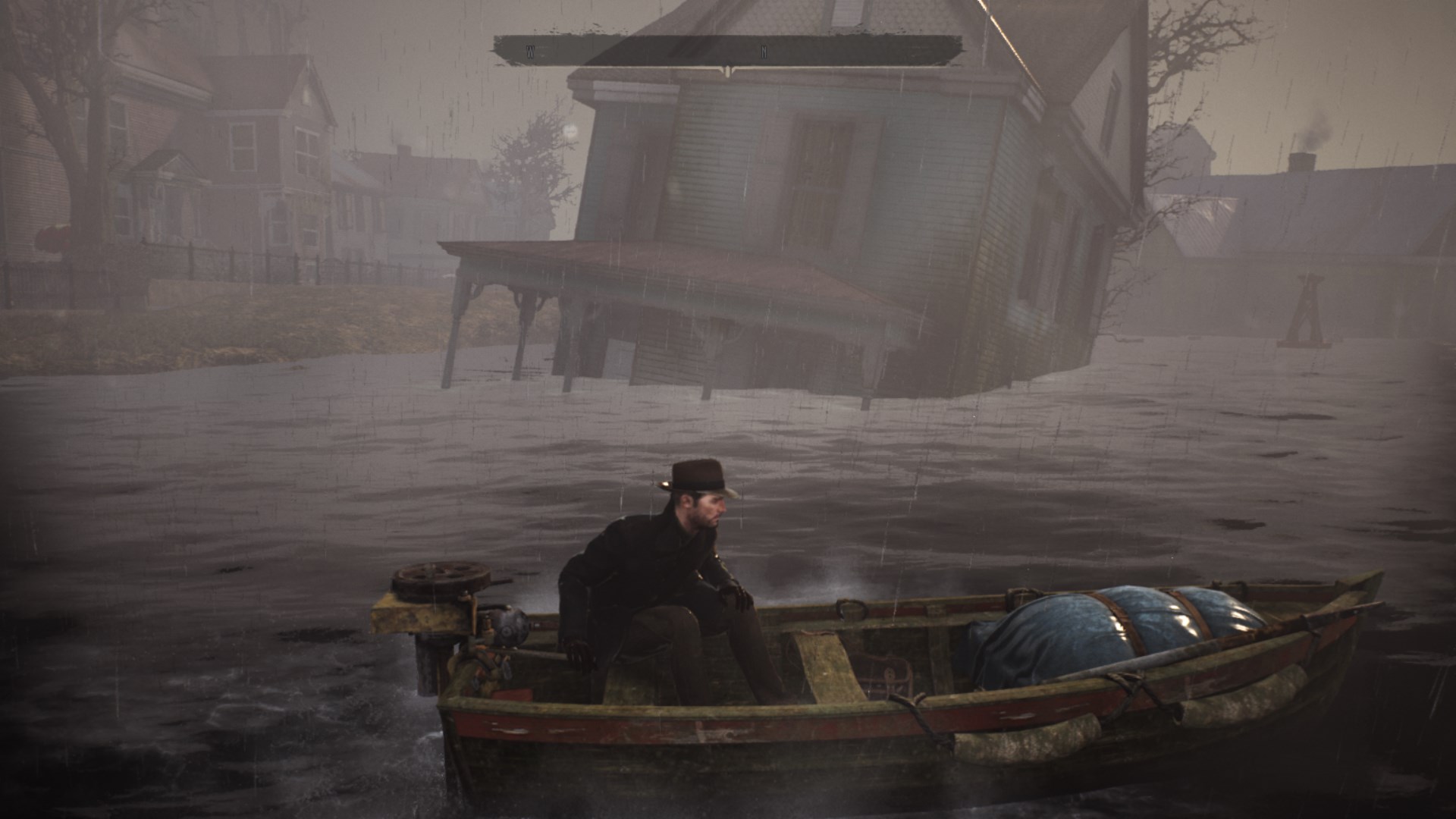 Oakmont is huge, but many of the interior locations end up looking the same.
Oakmont is huge, but many of the interior locations end up looking the same.
Other issues have less leeway and need to be addressed, though. The game consists of a big, open sandbox to solve Lovecraftian cases, but there are sadly only a handful of interior location types. It becomes pretty noticeable when every mansion has the same layout, every church is built with the same stair positioning, and so on.
On the investigation side, there are also a couple of instances where a critical clue can be easily missed with the lack of hand holding map icons. A scrap of paper that’s too similar to the color of the floor for instance might have you pulling your hair out for hours.
In one particularly memorable instance, I’d searched a location top to bottom, room by room, square inch by square inch, with no clue what the hell I was missing. I didn’t realize until about an hour later that one object that could be picked up had two clues on different sides — and that had never occurred with similar objects before, so I assumed I’d already found that clue.
Finally, the endings are also worth discussing, as some will love them but others may be a bit disappointed in the options. I found three endings in my playthrough, and they all reflected many of the themes throughout the game, but what really struck me was the one particular ending that wasn’t available.
The imagery, recurring motifs in a number of quests, and wording in some of the mythos lore seemed to strongly indicate there would be a Shutter Island style conclusion. I was expecting a fourth ending where all the insane things Charles Reed has been seeing are reflections of some past real-world trauma and he’d wake up in an asylum realizing he was living in self-delusion, but sadly that wasn’t the case.
The Bottom Line
 Love me some plague doctor outfit!
Love me some plague doctor outfit!
Pros:
- You’ve never experienced they Cthulhu mythos in this style before
- Oakmont is huge, and there are an unbelievable number of stories and cases to experience
- The combat and game length are much, much, much more satisfying than what we got from Call Of Cthulhu
Cons:
- Recycled interior assets between building types
- Some odd glitches in NPC behavior and clothing flaps around wildly while just standing still during a conversation
- The lack of hand-holding is a breath of fresh air… but it also means you’ll suffer from investigative frustration from time to time
While there are big issues that will hopefully be addressed with patches or DLC, I have to say The Sinking City is still one of the best games I’ve played this year.
It’s significantly longer than Call Of Cthulhu, especially if you go around trying to find all the hidden brain cylinders or completing side cases around Oakmont.
From unlocking outfits to finding random side stories of terrible things that have happened to people since the town started going mad, you can easily sink dozens of hours into the game and won’t ever run out of things to do.
With an excellent re-interpretation of the Lovecraft mythos and solid open-world gameplay, The Sinking City is just about everything you could ever want from a Cthulhu game.
[Note: A copy of The Sinking City was provided by Bigben Interactive for the purpose of this review.]


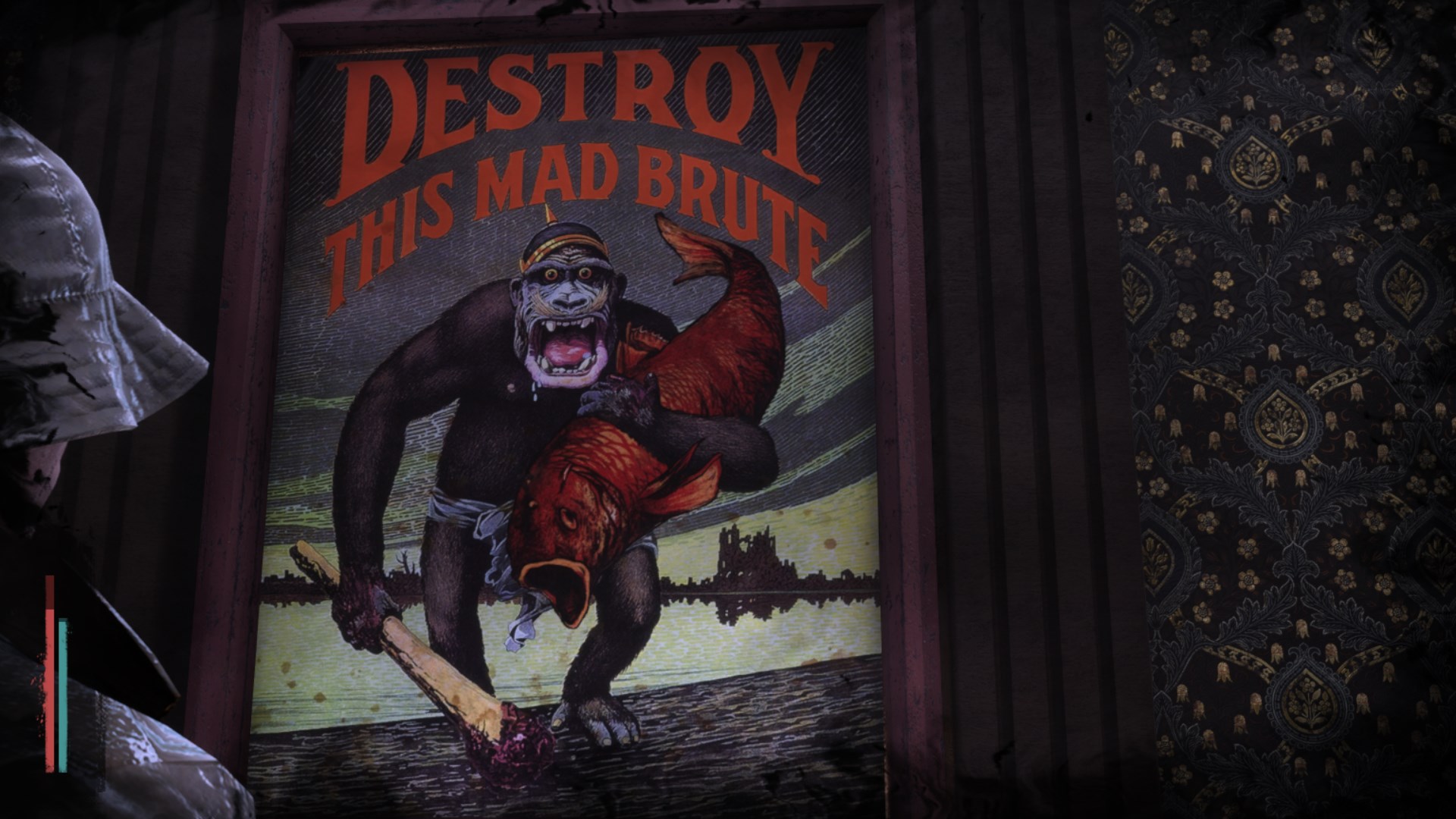





Published: Jun 11, 2019 03:35 pm